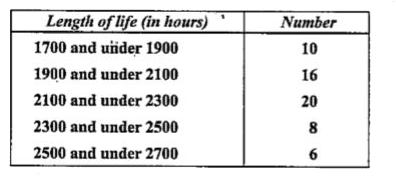To a germanium sample, traces of gallium are added as an impurity. The resultant sample would behave like
A conductor
A p-type semiconductor
An n- type semiconductor
An insulator
The correct Answer is:B
To solve the problem, we need to analyze the effect of adding gallium (a trivalent impurity) to germanium (a tetravalent semiconductor).
1. Identify the Nature of Germanium:
- Germanium (Ge) is a tetravalent semiconductor, meaning each germanium atom has four valence electrons and forms four covalent bonds with neighboring atoms.
Hint: Remember that tetravalent elements can form four bonds due to having four electrons in their outer shell.
2. Identify the Nature of Gallium:
- Gallium (Ga) is a trivalent element, which means it has three valence electrons. When gallium is introduced into the germanium crystal lattice, it can only form three bonds with neighboring germanium atoms.
Hint: Trivalent elements can form three bonds and will leave one bond unfulfilled when incorporated into a tetravalent structure.
3. Doping Process:
- When gallium is added to germanium, it replaces some of the germanium atoms in the crystal lattice. Each gallium atom forms three covalent bonds with neighboring germanium atoms, leaving one bond unfulfilled. This creates a "hole" or vacancy in the lattice.
Hint: Visualize how the bonding works: gallium's inability to form a fourth bond creates a space (hole) in the structure.
4. Understanding Holes as Charge Carriers:
- The unfulfilled bond (hole) behaves as a positive charge carrier. In semiconductor physics, these holes are considered as positive carriers because they represent the absence of an electron.
Hint: Remember that in semiconductors, holes are treated as positive charge carriers, while electrons are negative charge carriers.
5. Resulting Semiconductor Type:
- Since the addition of gallium introduces more holes than electrons, the resultant semiconductor behaves like a p-type semiconductor. In p-type semiconductors, holes are the majority carriers.
Hint: P-type semiconductors are characterized by having more holes than electrons, leading to positive charge dominance.
Final Conclusion:
The resultant sample of germanium doped with gallium will behave like a p-type semiconductor.
- Germanium (Ge) is a tetravalent semiconductor, meaning each germanium atom has four valence electrons and forms four covalent bonds with neighboring atoms.
- Gallium (Ga) is a trivalent element, which means it has three valence electrons. When gallium is introduced into the germanium crystal lattice, it can only form three bonds with neighboring germanium atoms.
- When gallium is added to germanium, it replaces some of the germanium atoms in the crystal lattice. Each gallium atom forms three covalent bonds with neighboring germanium atoms, leaving one bond unfulfilled. This creates a "hole" or vacancy in the lattice.
- The unfulfilled bond (hole) behaves as a positive charge carrier. In semiconductor physics, these holes are considered as positive carriers because they represent the absence of an electron.
- Since the addition of gallium introduces more holes than electrons, the resultant semiconductor behaves like a p-type semiconductor. In p-type semiconductors, holes are the majority carriers.
The resultant sample of germanium doped with gallium will behave like a p-type semiconductor.
Similar Questions
When arsenic is added as an impurity to silicon, the resulting material is
View SolutionAn impure sample of CaCO3 contains 38% of Ca. The percentage
of impurity present in the sample is :
View SolutionOne way of estimating wildlife population of interest is to draw a sample of the population, tag the animals, and then return them to the population. Then, at a later date, draw another sample at random from the same population and compare the results. An ecologist using this methodology captures, tags, and then returns 198 fish to a lake. Three months later the ecologist captures a sample of 135 of the same type of fish, of which 22 were tagged. What would be the ecologist's best estimate for the number of fish of that type that are in the lake?
View SolutionEqual masses of two samples of charcoal AandB are burnt separately and the resulting carbon dioxide are collected in two vessels. The radioactivity of ^14C is measured for both the gas samples. The gas from the charcoal A gives 2100counts per week and the gas from the charcoal A gives 2100 counts per week and the gas from the charcoal B gives 1400 counts per week. Find the age difference between the two samples. Half-life of ^14C=5730y.
View SolutionA purchasing agent obtained samples of 60 watt bulbs from a standard company. He had the samples tested in his own laboratory for length of life with the following results:

Calculate the standard deviation for these samples.
View SolutionA purchasing agent obtained samples of 60 watt bulbs from a standard company. He had the samples tested in his own laboratory for length of life with following results:

Find the standard deviation for these samples.
View Solution1.0g of a sample containing NaCl,KCl and some inert impurity is dissolved in excess of water and treated with excess of AgNO3 solution. A2.0g precipitate to AgCl separate out. Also sample is 23% by mass in sodium. Determine mass percentage of KCl in the sample :
View Solution33.6 g of an impure sample of sodium bicarbonate was heated strongly and it gave 4.4 g CO2. The percentage purity of NaHCO3 will be:
View SolutionThe half-life of redioactive element is 600 yr. The fraction of sample that would remain after 3000 yr is
View SolutionWhat is the resulting sample space if
one coins is tossed ,
View Solution
